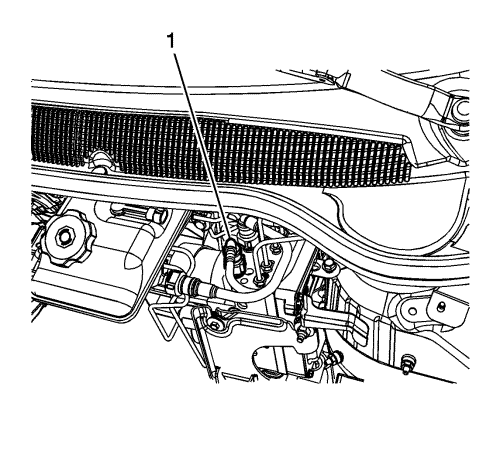Where is the Electronic Brake Control Module Located
The Electronic Brake Control Module is typically located near the brake master cylinder. It is usually positioned under the hood of the vehicle for easy access.
Modern vehicles are equipped with sophisticated electronic systems to ensure optimal performance and safety. Among these crucial components is the Electronic Brake Control Module (EBCM), which plays a significant role in modern braking systems. Located near the brake master cylinder, the EBCM is responsible for regulating the anti-lock braking system (ABS) and traction control system.
By monitoring wheel speed and adjusting brake pressure accordingly, the EBCM helps prevent wheel lock-up and skidding during sudden stops or slippery road conditions. Understanding the location and function of the EBCM is essential for maintaining the overall safety and efficiency of your vehicle’s braking system.

Credit: www.yourmechanic.com
Functions Of The Ebcm
The Electronic Brake Control Module (EBCM) is a vital component in modern vehicles. Located either under the hood or inside the car, it controls the functions of the electronic brake system, ensuring optimal performance and safety on the road.
About Functions Of The Ebcm
The Electronic Brake Control Module (EBCM) is a vital component of the vehicle’s braking system. It is responsible for controlling and coordinating various brake-related functions to ensure safe and efficient braking. The EBCM works in conjunction with other brake system components, such as the ABS and TCS, to provide optimal braking performance.
Anti-lock Braking System (abs) Function
The ABS is an integral part of the EBCM’s functions. It is designed to prevent wheel lock-up during hard braking, enabling the driver to maintain control over the vehicle. The ABS function of the EBCM continuously monitors the rotational speed of each wheel. If the system detects a potential lock-up, it modulates the brake pressure to that specific wheel, preventing it from skidding.
Traction Control System (tcs) Function
The TCS function of the EBCM is designed to enhance vehicle stability and traction in slippery or low-traction conditions. It monitors wheel speed and vehicle acceleration to detect instances of wheel spin or loss of traction. When the TCS system identifies traction loss, it intervenes by reducing engine power and applying the brakes to the specific wheel or wheels that are spinning. This action helps to maintain control and stability, especially when accelerating on slippery surfaces or during cornering.
The EBCM plays a crucial role in ensuring the proper functioning of both ABS and TCS systems, making it a key component for maintaining vehicle safety. By modulating brake pressure and optimizing traction, the EBCM helps to prevent accidents and provide a smoother driving experience, particularly in challenging road conditions.

Credit: gmtis.ntweb.ru
Locating The Ebcm
Electronic Brake Control Module (EBCM) is a crucial component in modern vehicles.
Typical Placement In Different Vehicle Models
EBCM location may vary depending on the vehicle make and model.
| Vehicle Model | Typical EBCM Placement |
|---|---|
| Toyota Camry | Under the driver’s seat |
| Ford F-150 | Near the brake pedal |
| Honda Civic | Behind the glove compartment |
Identifying The Ebcm In Your Vehicle
- Check the brake pedal area for a small module.
- Look under the driver’s seat or dashboard for hidden placement.
- Refer to the vehicle manual for specific instructions.
Identifying the EBCM location can help in maintenance and troubleshooting processes.
Understanding Ebcm Maintenance
Understanding EBCM Maintenance:
The Electronic Brake Control Module (EBCM) is a vital component in modern vehicle braking systems, responsible for ensuring smooth and efficient braking performance. Understanding how to properly maintain the EBCM can help prevent potential issues and ensure optimal functionality.
Common Issues With The Ebcm Maintenance And Replacement:
- Brake fluid contamination due to dirt ingress.
- Electrical connectivity issues leading to malfunction.
- Corrosion of EBCM connectors causing signal disruption.
Maintenance Tips for EBCM:
- Regularly check brake fluid levels and quality.
- Inspect EBCM connectors for any signs of corrosion.
- Ensure proper electrical connections and secure mounting.
Replacement Considerations:
If experiencing persistent EBCM issues, consider professional diagnosis and replacement of the module to maintain optimal brake function.

Credit: www.justanswer.com
Frequently Asked Questions On Where Is The Electronic Brake Control Module Located
Where Is The Brake Module Located?
The brake module is typically located near the brake pedal or within the engine compartment. It is essential for managing the vehicle’s braking system. Regular inspection is crucial to ensure its efficient performance.
What Are The Symptoms Of Electronic Brake Control Module Failure?
Common symptoms of electronic brake control module failure include ABS light on, brake pedal pulsation, and loss of traction control.
What Happens When Abs Module Goes Bad?
When the ABS module goes bad, it can result in a malfunction of the anti-lock braking system. This can lead to issues like inconsistent brake pressure, decreased braking performance, and the ABS warning light turning on. It is important to get it repaired or replaced to ensure safe driving.
What Does The Brake Control Module Do?
The brake control module regulates the vehicle’s braking system, controlling the distribution of hydraulic pressure to the brakes. It ensures optimal brake performance and safety during driving.
Where Is The Electronic Brake Control Module Located?
The electronic brake control module is typically located under the hood, near the brake fluid reservoir.
How Can You Identify A Faulty Electronic Brake Control Module?
A faulty electronic brake control module may cause the ABS light to illuminate on the dashboard and affect braking performance.
What Are The Common Symptoms Of A Failing Electronic Brake Control Module?
Common symptoms of a failing electronic brake control module include ABS light illumination, erratic brake behavior, and abnormal brake pedal feel.
Conclusion
Knowing the location of your vehicle’s Electronic Brake Control Module is crucial for maintenance and troubleshooting. By understanding its placement, you can easily access and inspect the module when necessary. Whether you have a newer model or an older one, familiarizing yourself with this component will help you keep your brakes functioning smoothly and ensure your safety on the road.


